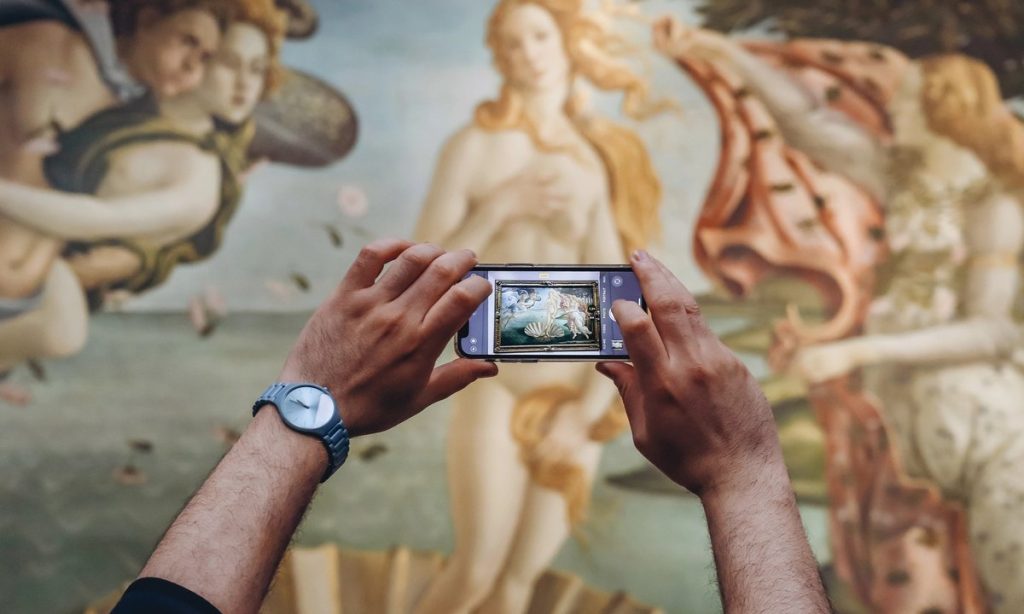
In 2022, Meta-owned social media platform Instagram came under fire for promoting short-form videos, which it calls “Reels,” over the still images the platform was once known for. Even some of Instagram’s top users, such as influencers Kim Kardashian and Kylie Jenner, called it out for “trying to be TikTok.” In July 2022, a campaign by the artist Tati Bruening called “Make Instagram Instagram Again” got more than 300,000 signatures, while the Artist Support Pledge organization called for “the same status of photos and videos”.
While it’s hard to know for sure whether the Instagram algorithm prioritizes Reels, museums are taking them more and more seriously. Viewed among the ten most followed art organizations on the platform, the average growth in Reels published between 2022 and 2023 was 37%. This far outstripped the output of the platform’s overall publications, which surprisingly fell by 0.4%. Some of the biggest increases in production were seen at the British Museum, which placed 31 reels in 2023, up from 12 in 2022; New York’s Solomon R. Guggenheim Museum, 45 to 77 in 2022; and New York’s Museum of Modern Art (MoMA), from 114 to 172.
However, it is not clear whether posting more Reels will necessarily lead to an increase in followers. With a 38% increase, the top ten institution that grew its following the most was the British Museum. However, the Guggenheim did not make a significant increase and MoMA’s followers grew by about 4%. In fact, the only other top ten museum to come close to the increase in followers of the British Museum was the Van Gogh Museum, which reduced its Reel production (6%) and overall production (5%).
Million dollar baby
How many users these coils reach is also an important consideration. Among the top ten, eight museums managed to create Reels with a million views or more. Interestingly, both the institution with the largest increase in followers, the British Museum, and the least, the Guggenheim, did not enter the category.
But what can we learn from the Reels they made? Leads The Met with 13 million viewed Reels. However, 12 of them were related to the Met Gala, and eight were celebrity-focused. The only Reel not explicitly linked to the Met Gala was a video promoting the Karl Lagerfeld exhibition in May. This shows a strong connection between content that resonates with popular culture and greater reach. This effect can be amplified by the prominence of the Reels tab in the app, as it works specifically to expose video content to users based on material they may already interact with.
However, this does not mean that museum accounts should completely ignore art, especially since not every institution has a Met Gala to fall back on. Most museums that hit the million mark did so when highlighting works from their collections, such as MoMA’s Ed Ruscha video. Chocolate Hall or the Van Gogh Museum tour of the artist’s sketchbooks.
Artists vs curators vs celebrities vs influencers
It’s widely accepted that adding people or voice to your video can increase retention and engagement. But who should these people be?
Last year, the Met launched a series with actor Rajiv Surendra, best known for his portrayal of Kevin Gnapoor in the 2004 cult film. Mean Girls. While the series did well, the videos didn’t get more views and likes than a video featuring Ken Soehner, the Met’s chief librarian, or former museum security guard Patrick Bringley promoting his new book. In fact, it is the unique insight or insider knowledge that excites users, regardless of who that person is. The Tate’s most viewed Reel featuring a person was by artist Cecilia Vicuña with one of her works. Meanwhile, a video by singer and actress Dua Lipa at MoMA’s expense didn’t even crack the top ten videos of the year.
In fact, celebrities may soon be old news. As of March, the Met has already had its first million-view reel of 2024. A video posted Jan. 4 by Recess Therapy — featuring Internet sensation Julian Shapiro-Barnum interviewing children with its host — has already received 15 million views.


